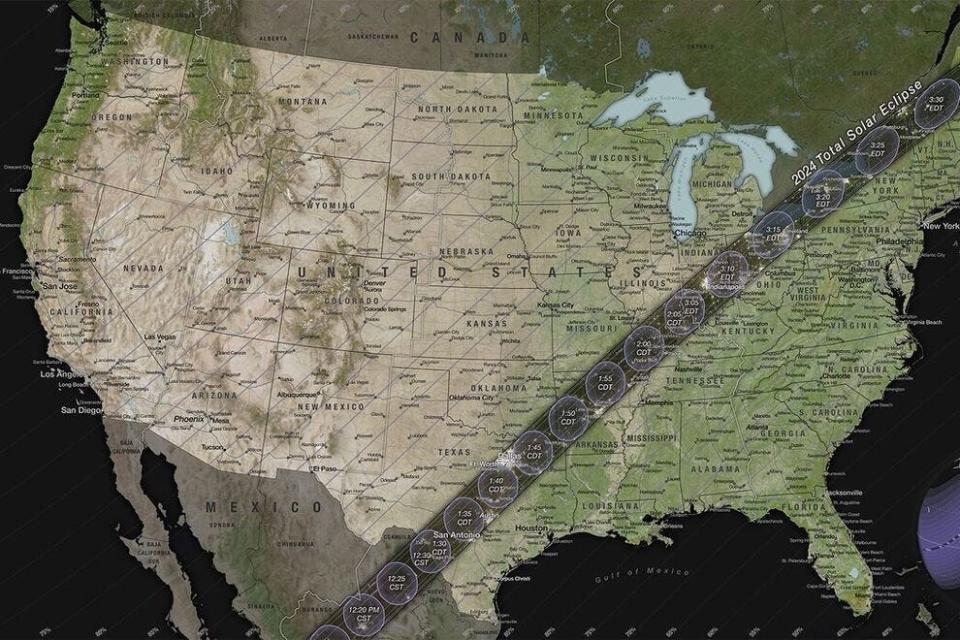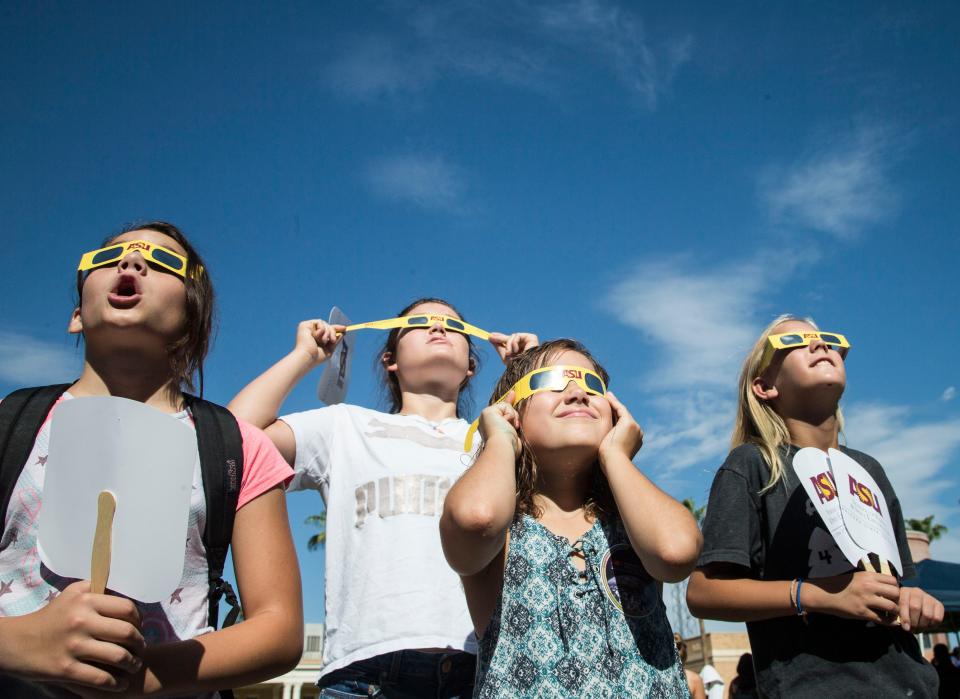Solar eclipse warnings pile up: Watch out for danger in the sky, on the ground on April 8
Editor's note: An updated cloud forecast for the April 2024 total solar eclipse is in. Read the latest eclipse forecast and news as of Wednesday, April 3.
The upcoming solar eclipse, as exciting and fun as it promises to be, is also coming with a growing number of safety warnings — both for what will happen in the sky and what will happen on the ground.
In late March, we've heard warnings about potentially dangerous fake eclipse glasses, the possibility for increased car crashes around the time of the eclipse and possible air travel headaches due to delayed or cancelled flights.
Safety is always a concern around solar eclipses, when millions of people will look to the sky as the moon passes in front of the sun. Looking at the spectacular event requires special glasses to prevent eye damage. Plus, tourists from around the country will be flocking to a narrow band of land from Texas to Maine — the path of totality, where the shadow of the moon will plunge the Earth into darkness.

Warning issued about fake eclipse glasses
"Counterfeit and fake eclipse glasses are polluting the marketplace," the American Astronomical Society announced in a statement in late March.
Using fake eclipse glasses – or no glasses at all – to look at the eclipse is dangerous to your eyes: Overexposure to sunlight "can cause severe eye injury, ranging from temporarily impaired vision to permanent blindness," the AAS said. They recommend buying from a vetted vendor and testing the glasses before the eclipse.
Here's how to tell if your glasses are legit.
It's also worth noting that you may be able to score a free pair of eclipse glasses.

Bad traffic and deadly traffic accidents
Traffic is predicted to be bad and potentially deadly — especially after the eclipse ends. Millions of people will crowd into the narrow path of totality, then most will attempt to leave all at once as soon as the eclipse is over.
Experts warn the excitement could create dangerous and busy automobile traffic conditions as people pack into the small part of the country with the best view.
Roads could be especially packed at the center of the eclipse's path as Americans who want the best view crowd into cities, towns and remote areas, many without the infrastructure to handle big crowds.
In Texas, which is expected to bear the brunt of the crowds, the state's Department of Transportation is preparing highway signs that will say, “NO STOPPING ON HIGHWAY TO VIEW ECLIPSE” and “NO PARKING ON SHOULDER, KEEP MOVING.”
Crews in Texas are also pausing some road construction and maintenance work on major corridors in the path of the eclipse April 7-9, based on traffic volumes.
More: The April total solar eclipse could snarl traffic for hours across thousands of miles
When a total solar eclipse passed over the U.S. in 2017, reports say some traffic jams didn't fully clear for more than 12 hours in some areas.
Even worse, a recent study reported that the 2017 eclipse "was associated with increased risks of a fatal traffic crash" – potentially as much as a 31% increase, the study said.
Air travel also impacted
The Federal Aviation Administration (FAA) is offering guidance to commercial planes and private aircraft ahead of the eclipse.
"Due to the high volume of traffic along the eclipse path, (airport) arrivals can expect lengthy delays during peak traffic periods," the FAA said.
Airports in Texas, Vermont, Maine, Canada, New Hampshire, Indiana, Ohio, Pennsylvania, Oklahoma, Arkansas, Illinois, Kentucky and Missouri will be primarily affected by the eclipse, the FAA said.
"The purpose of this notice is to inform airmen of the possible impacts to air traffic and airports along the eclipse path during the period April 7, 2024, (6 a.m. EST) through April 10, 2024, (midnight EST)," the FAA said.
More: What travelers should know about FAA advisory on total solar eclipse before April 8
Contributing: Jonathan Limehouse and Kayla Jimenez, USA TODAY
This article originally appeared on USA TODAY: Solar eclipse warnings say traffic, eyesight at risk on April 8
